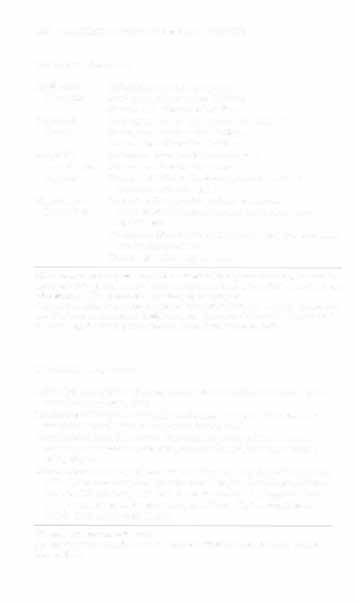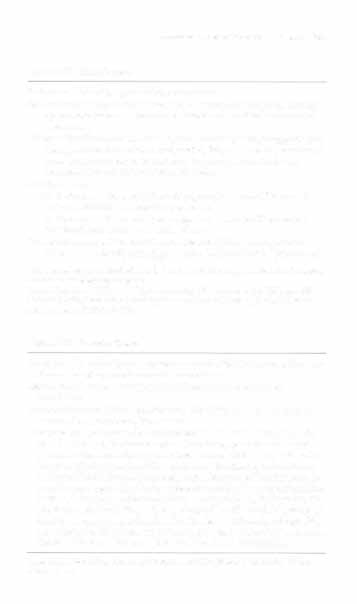i bc27f85be50b71b1 (267 page)
Read i bc27f85be50b71b1 Online
Authors: Unknown
Table rv-8.F. Tetracyclines
Indications: Various susceptible pathogens, including rickettsiae, and
infections of eye and gastrointestinal and genitourinary tractsj also used
in treatment of a cn e
Mechanism of acrion: Inhibit protein synthesis and prevents cell replication of
susceptible bacteria
General side effects: Discoloring of teeth, anemia, leukopenia, phototoxic
reactions, increased intracranial pressure, dermatitis, local irritation
Generic name (trade name); Demeclocycline (Declomycin), doxycycline
(Vibramycin), minocycline (Minocin), oxytetracycline (Terra mycin), tetracycline (Achromycin, Topicycline)
Sources: Data from AM Karch. Lippincon's Nursing Drug Guide. Phibdelphia: Lippincon-Raven, 2001;75; and Mosby's GenRX. The Complete Reference for Generic and Smnd Drugs 19th ed). S, Loui" Mosby, 1999;6 19, 769, 1 5 1 0, 1 690, 2112.




APPENDIX IV: PHARMACOLOGIC AGEf'.ITS
851
Table I V-9. Amiparkinsonian Agems
Indications: To decrease bradykinesia, rigidity, and tremor (as in parkinsonian disorders).
Mechanism of action: Amicholinergics suppress cemral cholinergic activity
and may inhibit reuptake and storage of dopamine. Dopaminergics
increase dopamine coment in the brain via an unknown mechanism.
General side effects: Headache, blurred vision, confusion. restlessness,
agitation, muscle weakness, heaviness of limbs, tachycardia, palpitations,
orchosratic hyporension, flushing, urinary retention.
Generic name (trade name): Anticholinergics include benztropine mesylate
(Cogenrin), biperiden (Akineton), diphenhydramine, procyclidine
(Kemadrin), trihexyphenidyl hydrochloride (Artane, Trihexy). Other agents
include amamadine hydrochloride (Symmetrel), carbidopa (Lodosyn),
ethopropazine (Parsidol), Icvodopa-carbidopa (Sinemct), pramipexole
(Mirapex), ropinirole HCL (Requip), selegiline hydrochloride (Carbex,
Eldepryl).
Sources: Data from Drug Facts and Comparisons 2000 (54th ed). St. Louis: Wolters
Kluwcr, 2000; and Drug Facts and Comparisons 200 1 (55th ed). St. Louis: Wolters
Kluwcr, 200 t.
Table tV-tO. Antiplareler Agents
Clopidogrel
Indication: Reduction of atherosclerotic evems in the patiem
(Plavix)
with recent eVA or m yocardial infarction, or established
PVD
Mechanism of action: Platelet aggregation inhibitOr (inhibits
ADP-mediated aggregation)
General side effects: Gastrointestinal and genitourinary tract
or imracranial bleedingj headache, dizziness, hypertension, dyspnea, TIP, allergic reaction
Ticlopidine
Indication: To decrease risk of CVA in patients experiencing
hydrochloride
stroke precursors
(lic\id)
Mechanism of action: See Clopidogrel
General side effects: Gastroimestinal and genirourinary tract
or imracranial bleeding; gastrointestinal disturbances,
neutropenia, TIP
Tirofiban
Indicarions: ACS and PTC!
(Aggrasrar)
Mechanism of action: Glycoprotein I1blllla inhibitor
(inhibits fibrinogen and von WilJebrand's factor from
binding to IIbfIlla recepror site to inhibit platelet
aggregation),
General side effects: Gastrointestinal and genitOurinary tract
or intracranial bleeding; dizziness, bradycardia, pelvic pain



852 AClITE CARE HANDBOOK FOR I'HYSICAL THERAI'ISTS
Table IV-IO. Continued
Eptifibatide
Indications: Angina, ACS, PTCI
(Integrelin)
Mechanism of action: See Tirofiban
General side effects: See Tirofiban
Abciximab
Indications: For use with heparin for ACS, PTCI
(ReoPro)
Mechanism of a ction: See Tirofiban
General side effects: See Tirofiban
Anagreiide
Indication: Essential thrombocytopenia
hydrochloride
Mechanism of action: Unknown
(Agrylin)
General side effects: Headache, palpitations, edema,
diarrhea, abdominal pain
Dipyridamole
indication: For use with warfarin ro decrease
(Persancine)
thromboembolic complications after cardiac valve
replacement
Mechanism of action: Platelet adhesion inhibitor, with exact
mechanism unknown
General side effect: Hypotension
ACS = acute coronary syndrome; ADP = adenosine diphosphate; eVA= cerebrovascular
accidem; PTCI = percutaneous rransluminal coronary imervcnrion; I)VD = peripheral vascular disease; TIP = thrombotic thrombocytopenic purpura.
Sources: Data from Drug Facts and Comparisons 2000 (54th cd). St. Louis: Wolters Kluwer, 2000; and Anticoagulant, Antiplarelet, and Thrombolytic Drugs. In RA Lehne (ed), Pharmacology for Nursing Care (4th ed). Philadelphia: Saunders, 200 1 .
Table IV-U. Antitussives"
Indications: Suppression of cough induced by chemical or mechanical irritation of the respiratory tract
Mechanism of action: Act centrally on the cough center in the medulla or
anesthetize stretch receptors in the respiratory tract
General side effects: Drowsiness, dizziness, headache, sedation, nausea,
vomiting, orchostatic hypotension, tachycardia, palpitations, sweating,
chills, oliguria
Generic name (brand name): Bcnzonatare (Tessa Ion Perles), codeine (codeine
sulfate), dextromechorphan hydrobromide (Benylin, Creo-Terpin, Delsym,
Diabetes CF, Drixoral, Hold DM, Perrussin, Robitussin, Suppress, Sucrecs,
Silphen, Trocal), diphenhydramine hydrochloride (Bydramine, Diphen
Cough, Tusstat, Uni-Bent Cough)
-Narcotic and non·narcoric forms.
Source: Data from Drug Facts and Comparisons 2000 (54th cd). St. Louis: Wolters
Kluwer, 2000.

